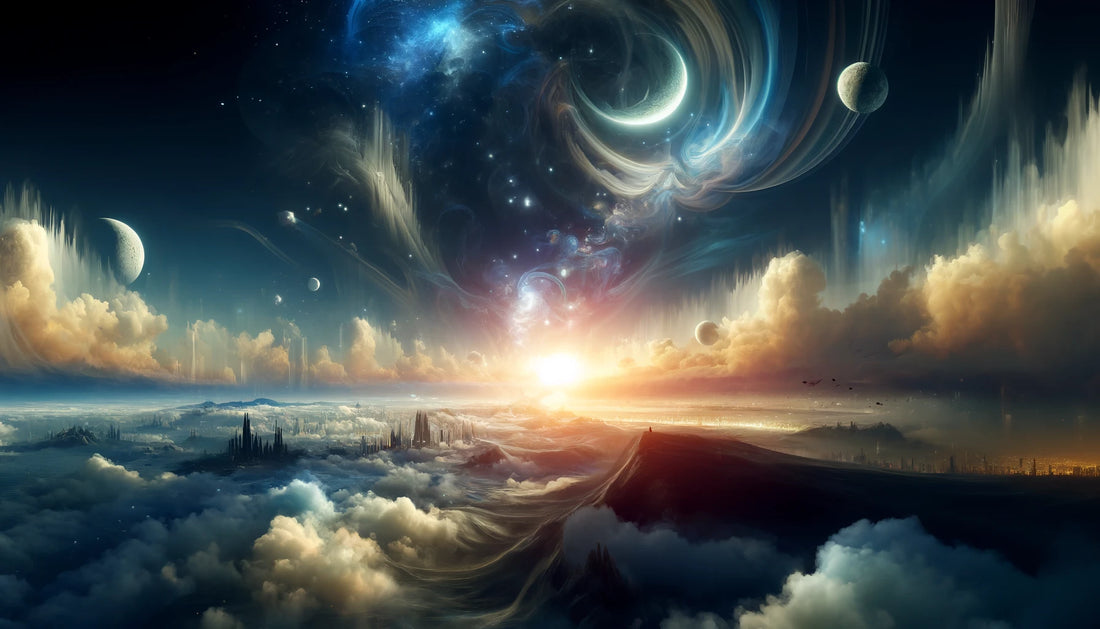
What If AI Could Paint Your Dreams? Exploring the Possibility of Dreamscapes in Digital Art
Share
Imagine waking up from a vivid dream, the images still fresh in your mind, and within minutes, watching those visions come to life on canvas through the brush of AI. What if AI could capture the ethereal beauty, the otherworldly details, and the surreal narratives of our dreams?

The concept of dreamscapes has long fascinated artists and creators alike. From Salvador Dalí’s melting clocks in The Persistence of Memory to the fantastical worlds in surrealist literature, our dreams are a wellspring of creative inspiration. With advancements in AI art generation, the gap between imagination and reality has begun to shrink, making it possible for anyone to transform their wildest dreams into visual masterpieces.
This emerging trend of "dreamscapes" in AI-generated art offers a unique opportunity for creators to blend reality with fantasy in ways previously unimaginable. Let’s dive into the art style known as "dreamscaping," where machines become storytellers of our subconscious minds.
The Dreamscaping Phenomenon in AI Art
Dreamscaping is a style that focuses on recreating the fluid, surreal, and often illogical landscapes we experience during sleep. With AI models designed to interpret natural language prompts and generate art, creators are now able to describe their dreams in detailed phrases and watch as neural networks paint them into existence.
This art style relies heavily on dream logic—imagery that doesn’t adhere to the rules of physics or time. Instead, it blends incongruent elements: cities floating on clouds, landscapes bathed in impossible light, and characters shifting forms mid-movement. The goal? To evoke the disorienting, often fantastical experience of being inside a dream.

How Does It Work?
AI art generators, such as DALL·E and MidJourney, allow prompt creators to input phrases like "a sunset over an ocean with melting cities in the sky" or "a forest of crystal trees beneath two moons." These generators interpret the description and produce highly detailed, stunning dreamscapes that feel plucked directly from the mind of a surrealist painter.
Dreamscaping art has grown in popularity among AI artists because it allows for boundless creativity. Since dreams follow no set rules, the prompts themselves can be as abstract or specific as the creator desires. It’s perfect for those who want to explore abstract narratives, environments, or characters that exist only in the twilight zone of the subconscious.

Why Dreamscapes are Perfect for AI Prompt Creators
Dreamscapes stand out as a genre for AI prompt creators because they provide infinite opportunities for exploration. There's no need to be bound by traditional artistic rules—dreamscaping thrives on breaking them. Every piece of art created in this style can be entirely unique, reflecting the wild possibilities that only dreams can offer.
Moreover, the ability to experiment with bizarre combinations and uncanny settings makes it particularly thrilling for prompt creators. With an AI, you can dive into the depths of your imagination, describe the most outlandish scenarios, and witness them come to life within seconds.
For instance:
- Want to see a giant whale floating among stars, with waterfalls cascading from its fins? Done.
- Curious about how a futuristic city would look built inside a colossal crystal orb? It’s just a few words away.
This sense of wonder and immediacy is what has propelled dreamscaping into the spotlight among digital artists using AI. It's an art form where the only limitation is your own imagination.

The Future of Dreamscaping in AI Art
As AI continues to advance, the precision and complexity with which it can render dreamlike scenes will only improve. We might see entire digital worlds created based on fragments of our dreams, or even AI systems capable of interpreting our subconscious thoughts in real time. Imagine wearing a device that tracks your dreams and waking up to a custom-made piece of art waiting for you in the morning!
Dreamscaping holds immense potential not just for individual artists but for industries like gaming, virtual reality, and even therapy. Dreamlike worlds can serve as immersive environments, offering new ways to experience storytelling, creativity, and personal expression.


